What is wrong with adding a highly toxic substance to our drinking water and why we should recommend our clients to filter their drinking water?
Depending on the form it is in even relatively low levels of fluorides are toxic: 2g will kill an 11st. adult and 300mg (what can be found in a tube of toothpaste) will kill a child.
Fluoride already occurs naturally in tea, endive curly kale and many other vegetables in a beneficial form for bone/teeth health. It naturally occurs in spring water and is also added to pesticides, dental paste/wash and cola drinks.
Artificial water fluoridation is not exact; levels can vary and can be in excess of acceptable levels especially if the fluoridated tap water is consumed on top of fluoride containing foods, drinks and dental products.
Statistically and according to a large study published by the BMA journal, water fluoridation only helps 1 in 6 children against tooth decay whilst according to some studies it may causes harm and be associated with conditions ranging from Osteoporosis and Cancer (especially of bones and testicular) to kidney stones and hypothyroidism.
Historically it has been considered that one part of fluoride per million parts of water is an optimal level to protect teeth. This figure has since been questioned and so has the way in which fluoride may protect teeth. Fluoride acts more as a antiseptic than a teeth builder and good dental hygiene is obviously more important than indiscriminately imposing a potentially poisonous substance to the population at large.
In 2015 just over 6.1 million people in the UK receive water with fluoride content, whether naturally occurring or added.
This means that about 10% of the total population is supplied with fluoridated water.
As Colon Hydrotherapist we have a responsibility to monitor and inform our clients of the quality of the water supplies. Dehydration is commonly underlying many conditions from constipation to kidney stones and headaches. Colonic Hydrotherapy contributes to rehydration and the quality of the water is important which is why the water used by IPCH trained therapist is always filtered to the highest standards.
Some water supplies contain naturally occurring fluoride and around 330,000 people, including those living in Hartlepool and Easington in the north east of England, Uttoxeter in Staffordshire and parts of north Hampshire and south Berkshire have naturally occurring fluoride in their water supplies.
Around 5.8 million people in England are supplied with artificially fluoridated water. Parts of the country with fluoridation schemes include Cumbria, Cheshire, Tyneside, Northumbria, Durham, Humberside, Lincolnshire, Nottinghamshire, Derbyshire, the West Midlands and Bedfordshire.
Some areas receive water with naturally occurring levels of fluoride that is below the optimum for oral health but can afford some degree of protection against tooth decay. However, in many instances the level of fluoride varies over time.
According to an article published in The Independent the following local communities receive artificial fluoridation
Cumbria
Around 120,000 people live in areas of west Cumbria covered by legal agreements for the supply of artificially fluoridated water.
Communities covered by those agreements include Workington, Maryport, Aspatria, Wigton and Cockermouth in the Allerdale Borough Council area and the communities of Whitehaven, Egremont and Ravenglass in the Copeland Borough Council area.
Cheshire
Around 137,000 people are supplied with artificially fluoridated water in Cheshire.
Fluoridated communities include Crewe, Nantwich, Alsager, Bickerton, Bulkeley, Burland, Wrenbury, Egerton Green, Faddiley, Beeston, Broxton, Handley, Huxley, Malpas and Tarporley.
Tyneside
Around 643,000 people are supplied with artificially fluoridated water in and around Tyneside.
Fluoridated communities include Newcastle upon Tyne, Gateshead, Wallsend, North Shields, Tynemouth and Whitley Bay.
Derbyshire
About 43,000 people are supplied with artificially fluoridated water in Derbyshire.
Fluoridated communities include parts of Bolsover District bordering Nottinghamshire, and parts of South Derbyshire District bordering Staffordshire

